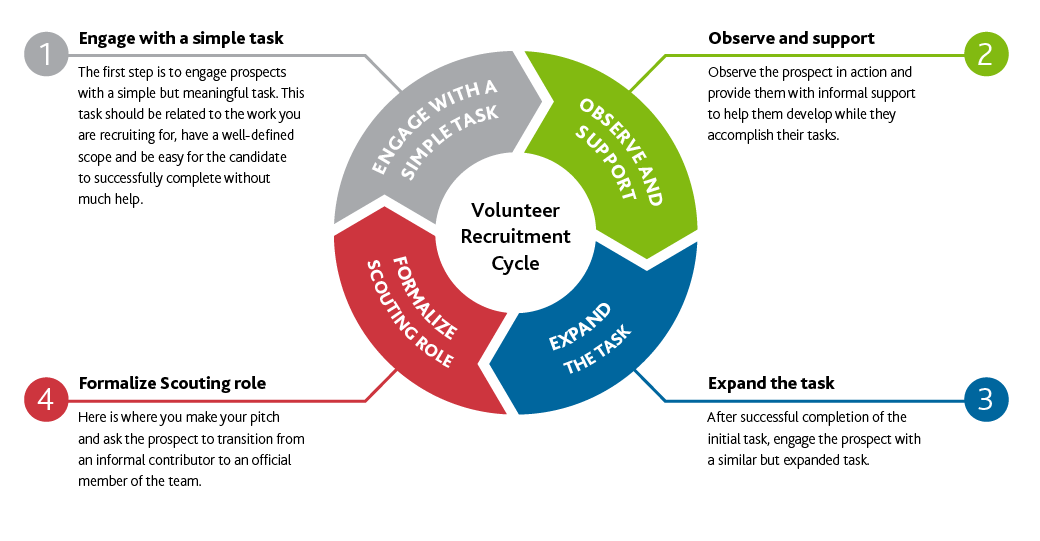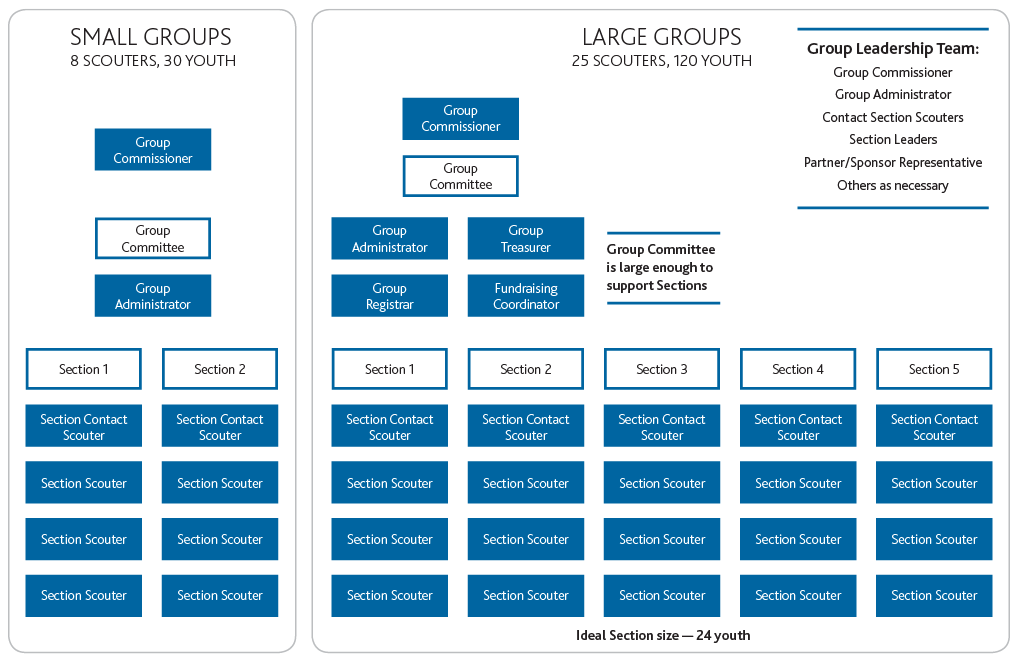| < Volunteer Support | Group Capacity | Group Health Navigator > |
| < Volunteer Support | Group Capacity | Group Health Navigator > |
We are committed to strong and healthy Groups that enable our Section Scouters to maintain focus on what matters most: our youth. To support healthy Groups, our aim is to ensure Group Committees have the capacity to fully support a high-quality program. There are many things that Group Committees can do to support Sections, but in general they should try to remove any barriers that Sections face in facilitating a great program.
| Volunteer Recruitment — Parents |
| Group Commissioner Call to Parents |
| Year-End Review Checklist |
| Parent Orientation Meeting — Resource Package |
| Parent Orientation Presentation Template |
| N/A |
Every Group needs to ensure that it has enough dedicated Volunteers to provide Scouting programs to the youth in its community. Most Groups don’t have prospective Volunteers knocking on their doors wanting to join, so having strategies for the recruitment of Volunteers is very important. Recruiting the right Volunteers is a critically important part of the process as well.
The following Volunteer recruitment strategies can be used by Group Committees individually or in combination to recruit new Volunteers:
Prospective Volunteers need to be introduced to Scouting in a very deliberate way so that they will enjoy Scouting and be successful as a Scouts Canada Volunteer. This process is called Selective Recruitment and it ensures that prospective Volunteers are a good fit with Scouts Canada’s mission and values.
Selective recruitment is about finding the Right People, with the Right Skills for the Right Responsibilities:
Selective Recruitment can happen two different ways:
The Prospect Engagement Cycle—The prospect engagement cycle is a useful model for thinking about how to recruit new Volunteers. The Prospect Engagement Cycle has four steps:

Recruitment Pools—Searching out qualified individuals who would make good Scouters can be difficult if you aren’t looking in the right places. Making use of recruitment pools will increase your chances of finding prospects who would make a good fit. Recruitment pools are communities of prospects who have similar backgrounds or motivations. In Scouting, we typically recruit Volunteers from three pools: youth, parents and non-Scouting individuals.
The Group Committee can play an important part in the Volunteer recruitment process. Section Scouters often struggle to have meaningful conversations with parents about volunteering because they’re so busy with youth and their meeting. Having a Group Committee member present to engage with parents during drop-off and pick-up, allows the Group to develop its parent prospect pool.
Having the Group Committee involved in the recruitment process also helps ensure the integration of the Volunteer screening and onboarding processes, ensuring a great experience for new applicants.
| Finance Policy |
| Group Financial Responsibilities and Reporting Procedure |
| Official Donation Receipts for Scout Groups Procedure |
| Gifts-in-Kind Procedure |

As members of Scouts Canada, we all need to be good financial stewards. We have a duty to ensure funds are used according to the wishes of our donors and supporters, in support of our Mission.
Scouts Canada provides a valuable service to the community through its youth development programs. When we fundraise, our activities are aligned with our values. We ensure that our fundraising activities are carried out ethically, effectively and efficiently. We are accountable to our donors and the community.
Since 1989, Canadian Scouts from all across the country have sold over $100 million of Scout Popcorn. Scout Popcorn helps Groups nationally to plan even stronger programs full of adventure. Over half of funds raised have gone directly back to Scouting activities such as summer camps, jamborees and canoe trips. Funds raised also help subsidize registration fees and No One Left Behind.
Fundraising with Scout Popcorn is youth-led and helps youth be better prepared for success in the world. In addition to raising money, youth develop valuable business skills and learn about financial responsibility, marketing strategy development and time management while increasing their self-confidence in the process.
| 1. Passive Management | 2. Thoughtful Management | 3. Proactive Management | 4. Management Excellence | |
| Group Capacity | Volunteers are recruited passively. Succession planning is limited. | Active recruitment is attempted when convenient. There is a succession plan for the Group Commissioner role. | Active recruitment is used to fill most roles. There are succession plans for key roles which include multiple candidates. | Active recruitment and succession planning occur constantly with careful thought given to long-term needs. |
| Administrative responsibilities are exclusively completed by Section Scouters; no dedicated Group Committee Scouters. | The Group has a dedicated Commissioner and Administrator; Section Scouters continue to have some administrative responsibilities. | The Group has a dedicated Committee including a Commissioner, Administrator, Treasurer, Fundraising Coordinator, etc. | The Group Committee achieves operational excellence and includes many Scouters with dedicated and specialized roles. |